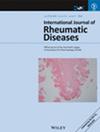Life's Essential 8 and Risk of All-Cause and Cardiovascular Mortality in US Adults With Arthritis: A Retrospective Cohort Study Utilizing NHANES Database
Abstract
Background
Life's Essential 8 (LE8) is a recently updated algorithm for evaluating cardiovascular health (CVH). This study investigates the association between LE8 and mortality risk among individuals with arthritis in the United States.
Methods
We conducted a retrospective cohort study using data from the US National Health and Nutritional Examination Survey (NHANES) 2005–2018. Participants with arthritis were included. Mortality data, including underlying causes of death, were obtained through linkage to national death records up to December 31, 2019. LE8 components (diet, physical activity, nicotine exposure, sleep, body mass index, blood lipids, glucose, and pressure) were measured and scored from 0 to 100. The total LE8 score, calculated as the unweighted average of all components, was categorized into low (0–49), moderate (50–79), and high (80–100) CVH. We employed Kaplan–Meier curves to estimate survival probabilities and weighted Cox proportional hazards regression models to evaluate hazard ratios (HRs) with 95% confidence intervals (CIs) for all-cause and cardiovascular disease (CVD) mortality. Stratified analyses and interaction tests were performed to explore potential effect modifications.
Results
Among 4519 participants with arthritis (median follow-up: 7.67 years), we observed 793 all-cause deaths, including 213 CVD deaths. Every 10-point increase in the LE8 score was associated with a 17% lower risk of all-cause mortality (HR: 0.83, 95% CI: 0.77–0.89) and a 25% lower risk of CVD mortality (HR: 0.75, 95% CI: 0.66–0.85). Compared to the lowest CVH tertile, individuals in the highest tertile demonstrated a 38% lower risk of all-cause mortality (HR: 0.62, 95% CI: 0.41–0.92) and a 62% lower risk of CVD mortality (HR: 0.38, 95% CI: 0.18–0.80). Kaplan–Meier survival curves revealed significantly higher survival probability for patients with high CVH compared to those with lower CVH (log-rank p < 0.05). Stratified analyses confirmed consistent associations across various subgroups. Similar findings were observed in sensitivity analyses focusing on osteoarthritis and other arthritis subtypes.
Conclusion
Higher adherence to LE8 recommendations is associated with reduced risks of all-cause and cardiovascular mortality among US adults with arthritis.

 求助内容:
求助内容: 应助结果提醒方式:
应助结果提醒方式:


